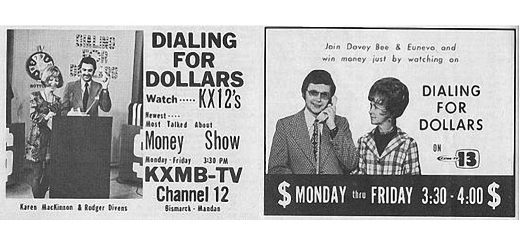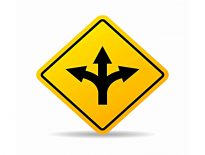Mark Cook – Harvesting Profits

Today’s post is a profile of Guru investor Mark Cook, who appears in Jack Schwager’s book Stock Market Wizards. His chapter is called Harvesting S&P Profits.
This article is part of our ‘Guru’ series – investor profiles of those who have succeeded in the markets, with takeaways for the private investor in the UK.
You can find the rest of the series here.
Contents
Mark Cook
Mark Cook began trading in the 1970s.
- He manages his own accounts and also offers an Advisory Service that gives timing recommendations on the stock and bond markets.
- He also runs training workshops.
He developed the Cook Cumulative TickSM indicator – an overbought-oversold indicator which draws on correlations between the S&P 500 and T-Bonds – and won the 1992 U.S. Investment Championship with a 563.8% return.
Cook appears in Jack Schwager’s book Stock Market Wizards.
- His chapter is called Harvesting S&P Profits.
Background
Cook grew up on his father’s farm in Ohio, and is proud of his roots.
- Schwager recalls that the first time he met him was as “a fellow speaker at an industry conference, dressed in bib overalls”.
- And even though he has made millions from trading, Cook still does some manual labour on the farm (at the time of the interview, his 81-year-old father still ran the farm full-time).
When he has a good year in trading, Cook buys more land
- He sees farmland as the ultimate “real” asset.
- He also collects antique and rare tractors.
Performance
Cook’s early attempts at trading were unsuccessful, and he only became consistently profitable after many years of carefully tracking the market, filling volumes of diaries, and analyzing every trade.
- He began to enter trading competitions, recording an 89% gain in 1989 (over four months), then 563% and 322% in 1992 and 1993.
In the six years from then to the date of the interview, his annual returns have ranged between 30% and 1,422%.
- These are actually conservative numbers based on start of year equity (Cook frequently withdraws profits during the year but never adds funds).
Schwager looks at accounts for the most recent four years.
- Cook was profitable on 87% of trading days, and one month in three was made up entirely of winning days.
Early days
Cook started trading after college, building up a $20K stake by trading cattle.
- His stockbroker thought that he liked “action” and pushed him towards options.
- He went broke in months.
The only reason I wanted to become a stockbroker was to get my money back.
He got into professional trading in 1979 because of a tour with a cow (Elsie) that was intended to promote farming.
- He couldn’t get hired as a stockbroker until a recruiter saw on his resume that he had been Elsie’s cowboy.
He started trading options again, but was still losing money.
- He kept holding options for weeks or longer, until they went to zero.
He decided to only sell options, and began to sell both calls and puts in high-volatility stocks.
- At this time, the margin on short-option positions was often less than the premiums from the sale, which meant that Cook never had margin calls.
- But he was still losing money.
He started selling options when their premiums seemed too high and got a programmer to automate the system for him.
- These were well out-of-the-money options that almost always expired worthless.
- This made several thousand dollars a month and by May 1982, Cook’s account was back up to $115K.
He thought things were going great, and increased the level of trading.
Cities Service
He made $50K in May, but in June he lost it all when an out-of-the money stock was bought out at a $20 a share premium.
- He was down $500K personally (from $165K in profit), and lost another $300K for his family.
- His margin call was $1M, which he couldn’t meet.
When he told his mother (face to face), she said:
Oh, is that all! I thought you had cancer. How long will it be until you make it back?
That stopped him from quitting.
- He told his mum it would take him five years to make the money back.
If you make the money back in ten years, that’s okay. Now go ahead and do it.
His parents lent him $200K and he borrowed $150K – at very high 1982 interest rates – against his farm.
- He was 28 years old.
He kept the trade slips in a drawer, but couldn’t look at them for another 17 years.
- And he never sold any naked options (options with open-ended losses) again.
The ironic thing was that the takeover fell through, and if he had been able to meet the margin call, he would have been back in profit within a month.
For the next five years he worked two jobs – as a stockbroker and as a dairy farmer, until he was able to sell the farm he had borrowed against.
- By the time of the interview, Cook realised that declaring bankruptcy would have been the right business decision, but he didn’t want to admit defeat.
The tick
He started trading again in 1984, but wasn’t profitable until 1986.
He started tracking “the tick”.
- This is the number of New York Stock Exchange stocks whose last trade was an uptick minus the number whose last trade was a downtick.
He noticed that when the market was going up, the tick was positive, and when was going down, it was be negative.
- But when the tick became very negative (< -400), the market would snap back on the upside.
- Strongly positive tick readings (> 400) seemed to be followed by sell-offs.
All the brokers he spoke to felt the opposite, so he started trading this indicator.
He next developed a proprietary “cumulative tick” indicator. (( He also has shorter-term signals that are based on more than one tick indicator ))
- This ignores periods when the tick is between -400 and +400.
Outside these thresholds, readings at regular intervals are added to a running total.
- When this total is below the historical 5th percentile, it’s a buy signal.
- When it gets above the 95th percentile its a sell signal.
The indicator only generates two to four signals per year.
- Normally Cook holds these trades for only a few days, but if the signal persists, he will continue to hold the trade.
By 1987, five years after he lost $500K (but only three years after he started trading again) he was back level.
- He then made a lot ($1.4M) in the bull market of 1987, before the crash.
- During the crash itself, he lost $300K, which he attributes to an ACL tear in his knee leading up to an operation in December of that year.
Bonds
Cook also tracks the relationship between the bond market and the S&P, which he says are “like a couple”.
The bond market always leads, so it is the female.
He follows a cycle where the correlations between the two markets waxes and wanes.
- He watches the bond market to see what it is predicting for the S&P 500.
Risk
Unlike many traders, Cook’s risk level (R) is often smaller than his profit target.
- Most traders look for profits of at least 2R but often Cook takes trades where the profit is 1/2 R.
He likes trades that have high probabilities of success.
- If a trade wins 7 times out of 8, he loses 1R and makes 3.5R, giving him a profit of 2.5R over the 8 trades.
Money management
In 1989, Cook decided to get into money management.
- To attract investors, he entered the (now defunct) U.S. Investing Championship.
- That year he finished second.
He gave up his brokerage business and just traded his own account.
- After a few months, the compliance officer of his clearing firm offered him a job.
- The firm raised $1M for him to manage from 1991.
After one week in January, he was down 8%, waiting for the market to spring upwards.
- The next week, US attacked Iraq, the market exploded, and the increase in volatility caused option premiums to expand.
- He was now up close to 100%, but he felt that the clearing firm wasn’t behind him.
They couldn’t take the volatility, and because they didn’t really understand what Cook was doing, they couldn’t explain it to their clients.
- He realised that he needed to speak to the clients directly, so they could hear the confidence in his voice.
Since option premiums had expanded, there were no more profits in buying options, so Cook traded lightly for the next few months and the account went sideways (still up 85%).
- At the end of April, the president of the company called, pressuring Cook to trade like he had in January (even though the market was different now).
- He called again in May, saying the first investors were pulling their money, and they were shutting the account down.
Cook never got paid for the profits he made, and he never managed other people’s money again.
Trading championship
He entered the 1992 US Trading Championship.
- Analysing his trades back to the 1970s, he settled on a strategy of not trading on Fridays (his worst day) and being more aggressive on Tuesdays (his best day).
It was the best thing that I ever did. That’s when I became a very proficient trader.
Quotes
Most traders that I’ve talked to about losing periods say they ease up or even take a break during those times. I increase my activity (but not my exposure). [Cook has a sign on his computer that says “Get Smaller”.]
Hope should never be in your vocabulary. It is the worst four-letter word I know.
Never increase the size of your positions on a winning streak. Other wise you have your largest position on a losing trade.
If you decide to trade for a living, you have to treat it just like any other business and go into it with a plan.
The main thing is that every trader has to be honest about his or her weakness and deal with it.
I never let a profit turn into a loss.
I represent the average guy out here the Midwest. I sit in my great-grandfather’s farmhouse and I can make a living trading. There is hope for people anywhere.
You have to be willing to work hard and pay your tuition, which is the money you lose while you’re learning how to trade.
People underestimate the time it takes to succeed as a trader. It takes three to five years of twelve-hour days and losing money. Very few people want to hear that.
Conclusions
Cook’s persistence in the face of early failure is impressive (as is the support of his family).
- Even more impressive is the disciplined way that he turned his study of these failures into a formula for success.
It’s also hard not to approve of him trading from his great-grandfather’s farmhouse.
Cook is clear about the amount of hard work and discipline that it takes to become a good trader.
- There are no short cuts.
You need to be fully committed, and to approach trading as a full-time business.
- This means having a plan and enough capital to be successful.
It’s interesting to note how a knee injury (and at another time, his father’s heart attack) had such a big impact on his trading success.
- It seems that physical and / or emotional distress should be treated in the same way as a run of losses.
- Either stop trading, or reduce your exposure to a level where you can’t do too much damage.
I’ve never come across Cook’s Cumulative Tick indicator before.
- It sounds interesting, and I expect to look at it in detail in a future post.
Cook himself used options, but it sounds like his trading style could be mimicked by private investors using spread bets on indices.
His approach to risk – lots of high-probability, high-downside trades – is unusual, but effective if you get the probabilities right.
- It also suits his personality, since he hates loses and would prefer lots of small wins.
Most short-term traders have lots of small losses and a few big wins.
- Trading – like investing in general – is not a one-size-fits-all game.
Until next time.



















